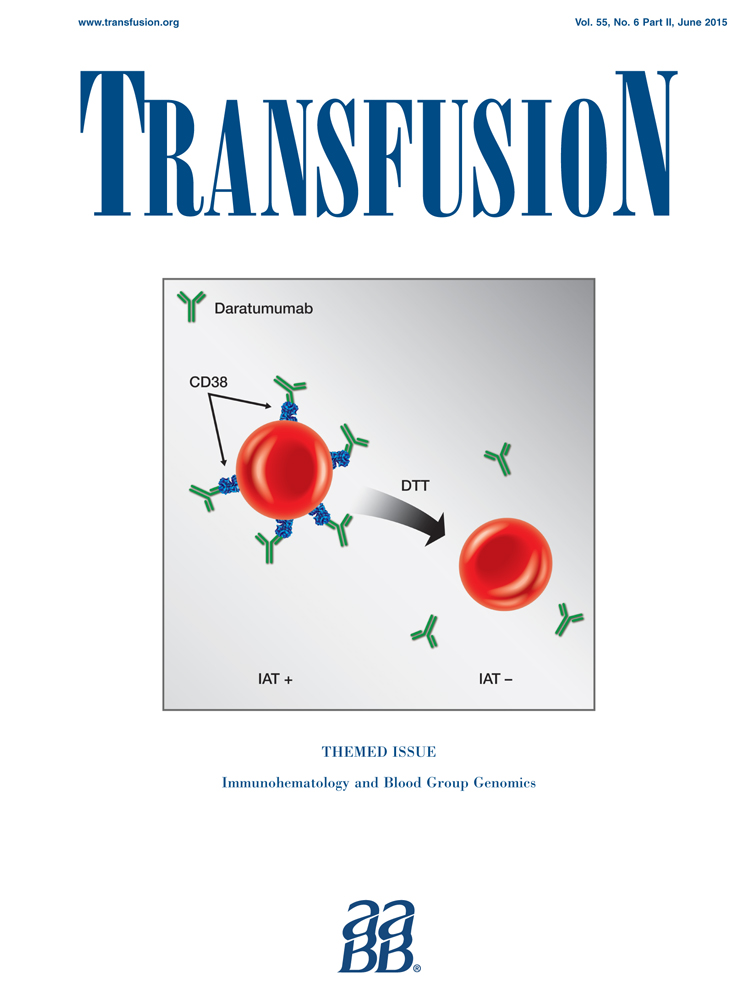A comparison of methods for the detection of the r′s haplotype
Abstract
Background
The r′s haplotype is found in 5% to 15% of individuals of African descent. Persons with this haplotype have a partial C antigen and weakened e and can produce anti-C or other “e-like” alloantibodies. Thus, for these chronically transfused patients, accurate detection of the r′s haplotype is important for selection of matched units.
Study Design and Methods
African-American donors were genotyped using the human erythrocyte antigen (HEA) microarray. Samples (n = 125) identified as “possible r′s” were then tested by IDCORE XT and RHD and RHCE microarrays. DNA sequencing was used to resolve discordant samples. The genotyping results were compared to serologic testing using a monoclonal anti-C reagent (Clone MS24).
Results
Of the 125 possible r′s samples identified by HEA, only 94 (75%) were confirmed by both RHD and RHCE microarrays. The IDCORE XT accurately detected 93 of 94 (99%) of the confirmed r′s and had no false positives. DNA sequencing of the one discordant sample revealed the presence of a compound heterozygote with RHD* DIII.4/RHCE*ceVS.02 as one haplotype and r′s Type 2 as the other. The 31 unconfirmed r′s samples carried RHCE*ceVS.03 not linked to the hybrid RHD-CE-D. This occurred most often with RHD*DIIIa (55%) or RHD*01 (19%) and rarely with DIII.4, DIII.6, DAU3, and weak D Type 14. Serologic testing with anti-C gave 100% concordance with the r′s samples.
Conclusions
The predominant type of r′s in African-Americans is Type 1, which can be detected either by a reagent anti-C containing Clone MS24 or by IDCORE XT. However, serology cannot differentiate between a normal C allele and the hybrid.




